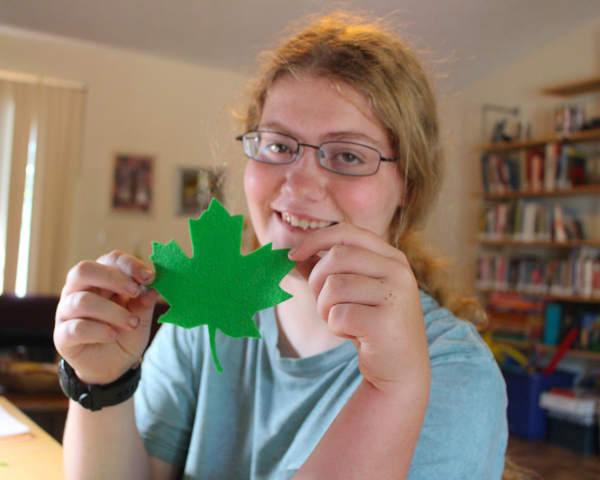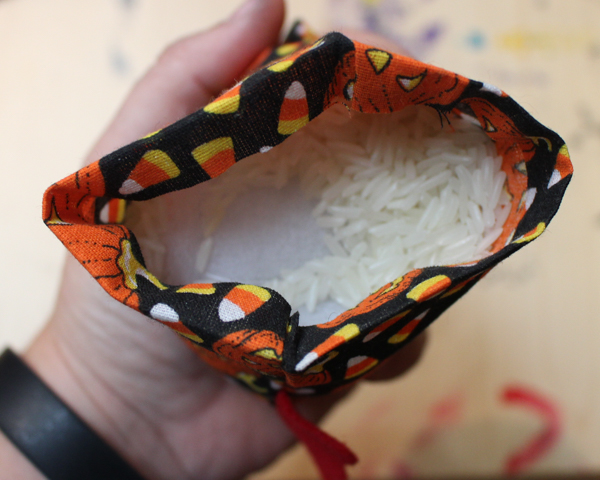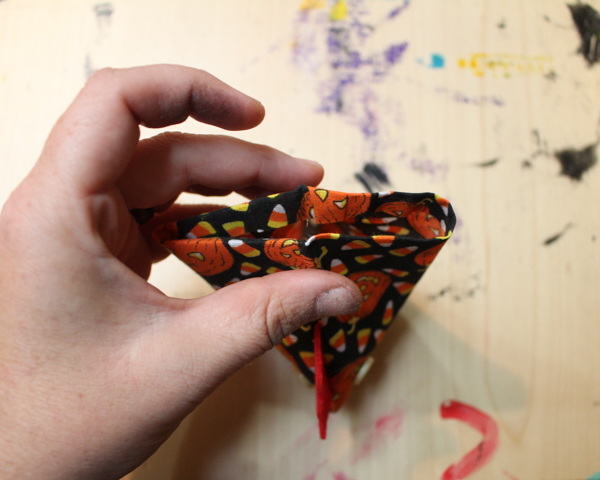Sooo... you know how for the past six years I've been griping that we must have lost a box or two during the move to our current house, because there's a bunch of random stuff I know I own but can't find?
Good news: I FOUND ONE OF THOSE BOXES.
Bad news: It contains NONE of the things that I'm missing. Not my two Master's diplomas, nor Matt's undergrad diploma. Not my favorite Steven King books from my childhood. Not my Space Camp windbreaker, which I miss so badly that I can't even stand it.
Instead, this box appears to be a time capsule of the contents of my mending basket in my old house, plus some baby clothes that I'd been saving (which is awesome, because I hadn't even realized I was missing them!), plus some totally random stuff that I bet anything was just thrown in while we were moving.
Want to see what I was in the middle of mending in the summer of 2014?
The snap on Will's shorts:

The drawstring on a dance bag that only needed to hold a pair of soft leather ballet shoes, a wee little leotard and pair of tights, a brush and bobby pins and bun holder, and a snack:
Now that kid has a dance bag the size of a duffel, and it holds street clothes, extra tights and leos, a jazz outfit, flat ballet shoes and pointe shoes, warm-up booties, a couple of dance skirts, tension bands, a brush and fifteen zillion bobby pins and hair bands, headphones, sewing kit, a water bottle...
..and that snack, of course!
Not pictured are two pairs of homemade pants with busted seams, and one of Matt's shirts with a hole under the arm. When I showed Matt the shirt and asked him if he still wanted me to mend the hole six years later, he said naw, and he immediately put the shirt on and wore it for the rest of the day. Nobody cares if you've got a hole in the armpit of your shirt when there's a pandemic!
Here's what I was apparently also in the process of sewing:
Tiny little stretch velvet leggings:
Syd tried them on but couldn't get them over her ballerina calves. I may have to find some more stretch velvet, though, because they're righteous.
Pillowcase dress from a thrifted hand-embroidered pillowcase:
Man, I really missed out with this one, because even though this would still work as a cute top for either kid these days, neither kid will currently be caught dead wearing a pillowcase top sewn from a sweet, hand-embroidered pillowcase, damnit.
Okay, check this out, though, because THIS makes up for a lot:
You guys, that is a $15 iTunes GIFT CARD, AND IT IS STILL GOOD! Christmas came early this year!
I also found a few keepsakes that I'd forgotten I lost. I was stoked to see some photos I'd printed from Will's pirate-themed eighth birthday party; I lost most of my digital photos a few years ago, so photos are especially precious to me now.
On that same note, I found two CF cards from my first digital camera. I don't own anything that even reads CF cards anymore, so I didn't even blink before I bought a
USB thingy that reads memory cards.
You guys, THERE MIGHT BE PHOTOS I DON'T HAVE ON THEM! If there are, I will cry.
I don't know if I ever would have remembered on my own that I own this, but I am SO happy to have it:
It's a pillow sham that my Mamma sewed for me to match my navy bedspread. I don't know what I'll do with it, as it's not to my taste now (nor, if we're being honest, was it to my taste then, but I still remember being so pleased that she'd made it for me, nevertheless), and before I spotted it, in the bottom of that box, I'd completely forgotten about it. But it's brought back to me a vivid memory of my childhood bedroom, furnished with a heavy wooden bedroom suite that I'm certain only missed being mid-century modern because of my grandparents' old-fashioned taste. There was thick grey carpet on the floor, an over-the-door rack that held some of my paperbacks, and my very own tiny little TV, massive boom box, and half-dozen favorite dolls sat on the dresser. I ruined the closet doors by gluing pictures cut out of Time Magazine all over them, god only knows why, and it's a wonder that we didn't get rats because I also liked to keep a stash of candy and Little Debbies hidden in a cubby behind my paperbacks--I never ate any of it, but knowing that it was there gave me a comfy feeling.
I don't hoard food or paperbacks anymore, but I do still like to glue stuff to walls. I still prefer to fall asleep to the TV or music, I don't care which, I still have a soft spot for old-fashioned wood furniture, the kind that's hopelessly out of style and does not care, and I still think that handmade gifts are the most precious things that one can own.

















































